Why loose parts make me want to tear my hair out! – How to Manage Loose Parts in Play
I have a fierce commitment to getting more loose parts into kid’s hands because I regularly see their immense value. But how do we effectively manage loose parts for play? I am also a parent who has a strong desire to stop picking up (and stepping on) these loose parts. Even with all their play value, loose parts are tricky. Kids take ‘the stuff’ and move it around, lose it, break it, and general play with it! I hear from parks staff that have to regularly return building sticks back to their play area. Some pieces will inevitable be stolen or disappear as a pocket treasure. In some circumstances, loose parts could hurt kids. Kids could fall on them, get cut by a broken piece, or even choke on a small part. Then starts the liability conversation.
I decided to call on Garrett Riggs, my favorite loose parts guru from Childswork Learning Center in Portland OR to inquire about how they manage loose parts play. Their school is play based and filled with paint, blocks, pets, glue guns, glitter, and baskets (of the loved and dreaded) loose parts around every corner. They have a wonderful loose parts shed in their new Salmon Creek Children’s Forest. In the following interview, Garrett and I explore how my two loose parts sides might find peace.
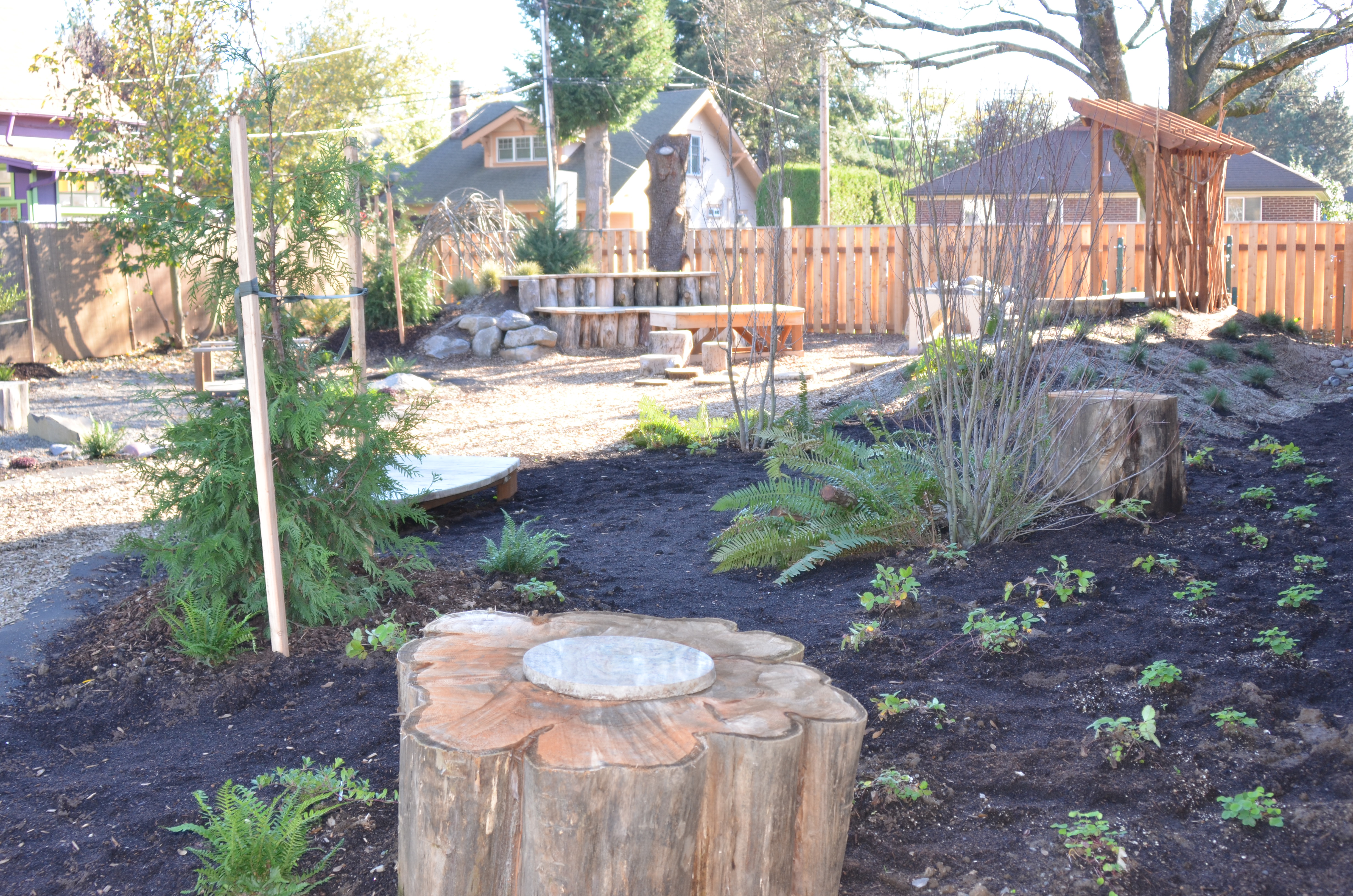
THE INTERVIEW
Michelle: Why do you use loose parts outside?
Garrett: So many reasons. One of them is that concept that loose parts can act as an invitation to play, so that when you go outside, the space that you’re in is not the same every single day, like a solid structure for climbing on, a solid structure for swinging on. You can have dump trucks and shovels and wood cookies and those things change every day. It’s a different invitation when you see loose parts. I think that’s one component of it. Loose parts outdoors and inside, give your brain that challenge of, how do I make this thing be what I need it to be? Or if I need something to be this, what can do that job? I think both those things have beenproven to help children with their executive functioning and their planning skills.
Michelle: I’m glad to hear you say that, executive functioning. I feel like that’s what it’s all about.
Garrett:
Yeah, I think that’s a huge driving factor for our school. We are starting to think about education in that light. We read “Mind in the Making” last year. It outlined essential skills for growing up into a well functioning adult. It’s very heavy on the executive functioning. The ability to plan, and the ability to use your prefrontal cortex.
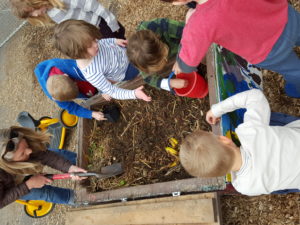
Michelle: What’s passed this test of time here to help manage loose parts for play? What works best?
Garrett: Natural materials, for a couple of reasons. They break and they break down, but they’re easily replaceable. It’s almost like, as they break, they go through a different life and a different use. It might start off as a full wood cookie, or a full stump, and it slowly degrades or breaks into triangles. When it’s a triangle, it becomes a very different thing. When it stops being a triangle, eventually it just becomes a bark chip and you don’t have to worry about it. The stump does the same thing, it rots. It might be a stool at this point, but 2 years from now it’s a place to look for slugs and turn it into something to investigate. I think natural materials are the best of the products that we found, especially compared to plastic materials. Which are great, can be great, but break, don’t last, are dangerous, often become weapons. I don’t know why, but in my mind there’s a difference between swinging a PVC tube, and swinging a stick.
Michelle’s Note: This is nice to hear. I have experienced natural pieces having a superior value. I am not the only one!
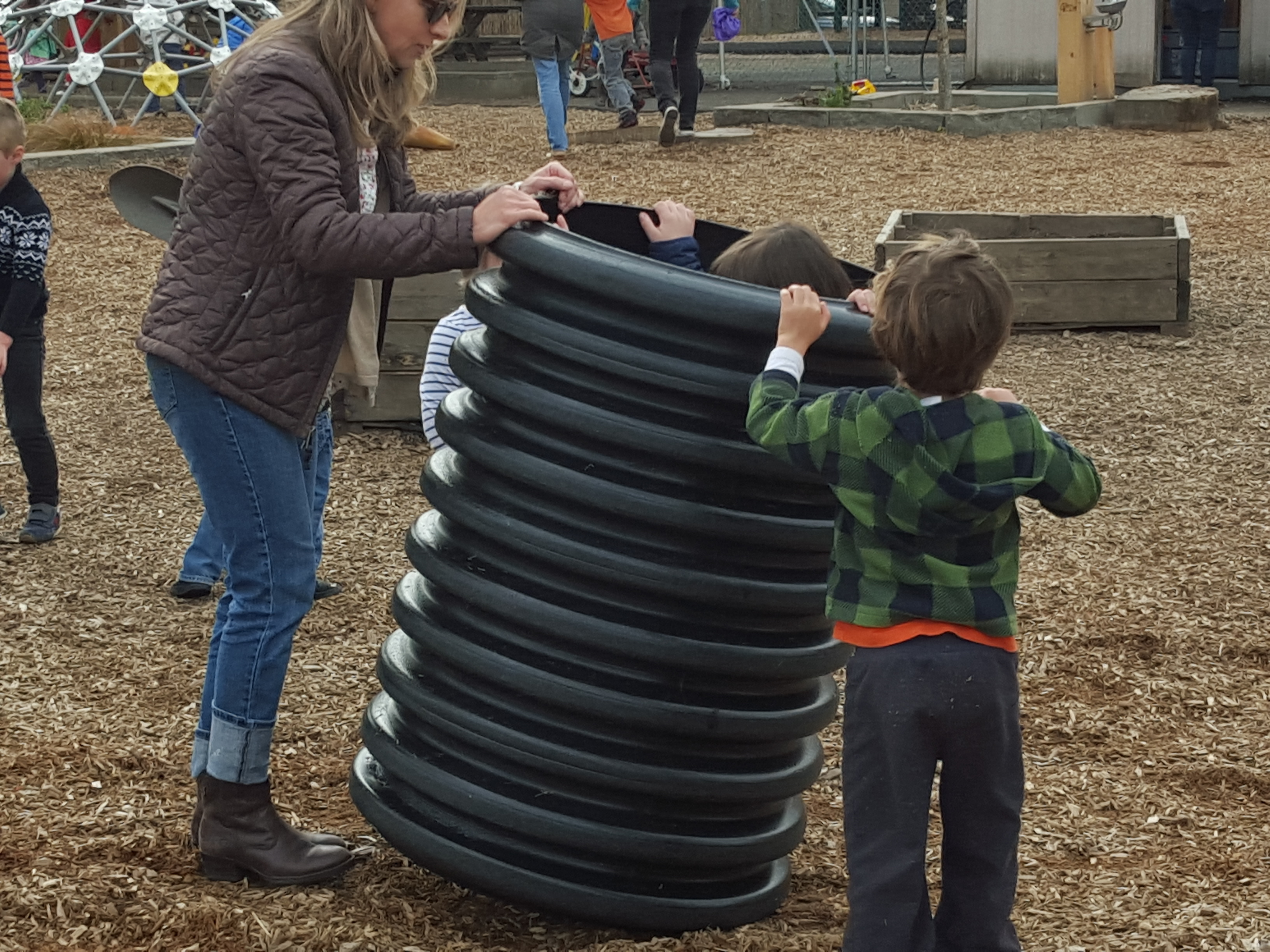
Childswork has this cool big tube that passes muster for longevity and free play.
Michelle: Do you find that kids use them (natural and non natural materials) differently?
Garrett: I don’t know. I think the stick has more possibilities. A lot of the plastic loose parts seem to come with one, very specific intent. So a PVC tube is for moving water, if it can’t move water, then you struggle to find a good use for it and it becomes a great swinging implement. But a stick, it can be a cane, or it can be a wand, or it can be a staff, or something like that. The possibilities are more open, so maybe it’s less likely to become a sword, or a baseball bat.
Michelle: Is there anything that you’ve implemented that was a big flop? Too dangerous, too messy? Horrible for some other reason?
Garrett: Yes and no. I’m big on the concept that getting out of bed is dangerous, and we have to learn how to navigate a world of dangers. So children practicing in a fairly safe space is important, in that, when a PVC tube breaks because it got whacked too hard on the ground and has a sharp edge on it, yeah, that has to be removed. B
ut at the same time, children have to learn how to understand that, okay, this has to be cleaned up now, this is dangerous. Now the play has changed a little bit, and that’s important. I would never consider that a flop, that this thing broke and became dangerous. The plastic materials that break, I think, are the ones that we are most often replacing. Metal that gets sharp edges on it. But again, I don’t see them as flops. PVC tubes, I think, are really cool and have a lot of opportunities, but they became very difficult to manage. Other than that, no, no such big flops.
Michelle’s Note: Ok, I am listening here. Find success within your ‘failure’. It is all learning.
Michelle: What’s your strategy for maintaining sanity with loose parts everywhere?
Garrett: Howdoes that Frozen song go again? Let it go? I think there’s a component of that, though. In early childhood studies, you’ve got to be okay with letting some things go, and the shed not being just exactly perfect at the end of the day. Knowing a couple of times a year I’m going to have to empty out the shed, reorganize the baskets, and put it back together. To a degree, you maintain your sanity by not forcing the children to live up to my expectations of a beautiful, organized structure at the end of every day. Being okay with it being a little messy and untidy and a toy or 2 left outside, or a material stacked up and left somewhere.
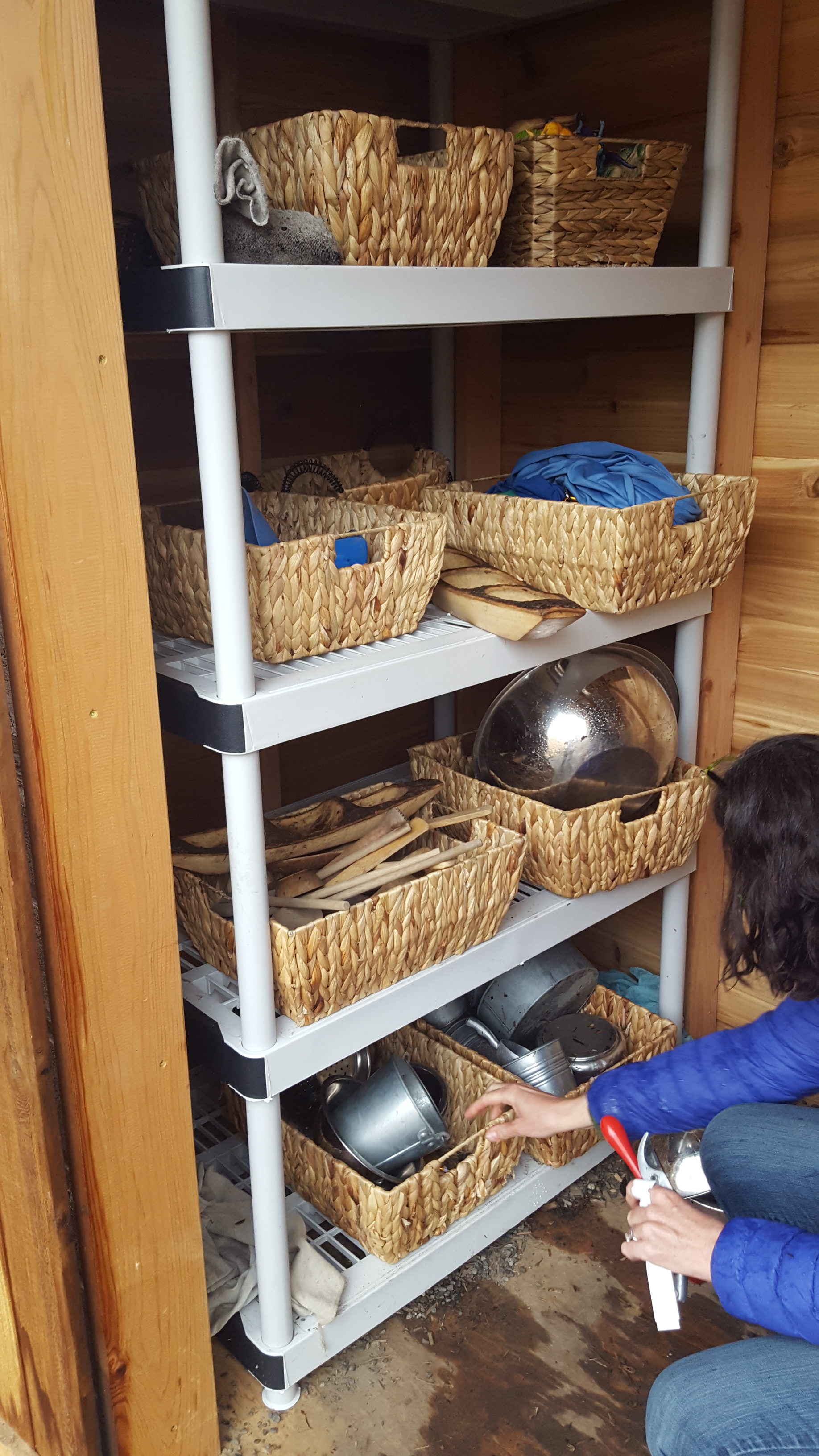
More and more, I’ve noticed this year, children need scaffolding and a whole lot of areas that adults take for granted. One of them is cleaning up and tidying up at the end. The blanket statement of, “time to clean up and line up”is like a free for all for children. They find a toy or a material that they can clean up, and then get it to the shed in the location where it goes. They tossed in, because they’ve done it a couple of times, there’s no organization for them to even be able to see how to contribute to this. We forget that, if we’re going to hold children to the expectation, this is what a cleaned up shed or a cleaned up basket of loose parts looks like, then we have to show them that first. We have to have a system that they can understand, that can be accessible to them. One of our challenges as a school that we haven’t corrected is the shed is very accessible to adults, a child almost needs to come up to me and say, I need this. Now I’m not observing or being a part of the play, I’m getting a material for a child who should be able to access materials on their own. It this way they manage loose parts for them selves.
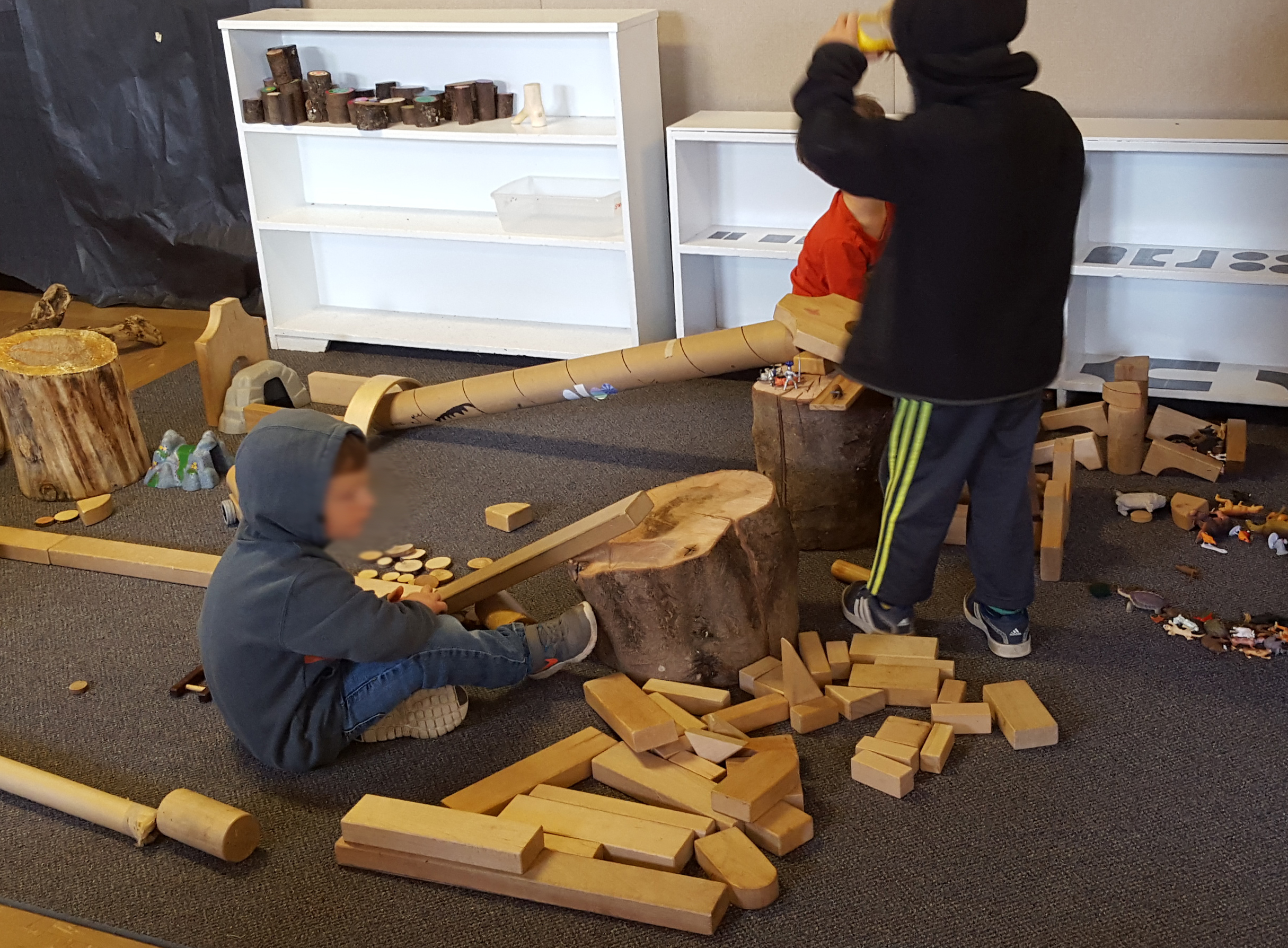
Notice the very empty shelves!
The maintaining sanity with, loose parts are really important. Having materials for children is really important. But a basket full of materials is going to be dumped out in its entirety because a child can’t see the bottom of the basket. Their only method of finding it out is dumping it out. You can organize it by remembering that less is more sometimes. Just a couple of cups and stainless steel bowls in the basket is better. Then I can see everything that’s in there. I don’t have to dump out the whole basket to find what I need. Then run away because I want to play with my materials and I don’t want to clean up the basket that I just dumped out. Remembering that loose parts doesn’t just mean fill your shed with components for children to use, but to be intentional in what you’re choosing, how it’s presented to children, and how you expect them to contribute to the cleanup portion of the show.
Michelle’s Note: This is where we are getting to the good stuff. It is simple and makes sense, but as an enthusiastic adult we sometimes forget. Keep it simple. be intentional, show kids how to clean up properly, and lower your expectations a bit.
Michelle: In an ideal world what would you try with loose parts?
Garrett: In an ideal world, I’d have a shed that had 500 baskets that manage loose parts, so that I could have little glass jewels in this basket, small animal figurines in this basket, small wooden cookies in this basket. I’d have all of these options and materials, all available less than 3 feet off the ground so that children could access all of these things and use their imagination for anything. Then me as a teacher could say, okay, this day we’re going to use this line, and I’m going to set up some invitations with this line. We’re going to listen and hear these stories. When I hear them developing some idea, I’m going to change it a little bit and get out a new line of materials. Then I could see, how does that change the way they approach that topic, or the way they approach the story that they’re telling? I would have thousands and thousands of options with a system that could manage that.
Michelle: Like a conveyor with certain set of boxes for the day.
Garrett: Yeah, right. Like the sushi train going by. It’s not always me choosing it, but that children know that these are our materials. It doesn’t become 500 baskets dumped out across the ground that need to be now sorted, and put back into their locations.
Michelle: Awesome, I can picture it.
Garrett: Yeah, that concept of using different materials to tell the same story I find really fascinating. I really like that. That ability to add details to a story, and to make it a little more rich. It’s different than pre literacy skills. Like, you start with the beginning, and you have a setting, and a character. It’s teaching children how to add richness and depth to a story. I guess that’s the ideal scene because we work on the rudiments, and we’ve got to teach the rudiments. If you have the capacity to teach a child the, I don’t know, the thing that can’t be named. The reason we read certain books and we go to certain concerts. If you could start that in earlier in childhood, I think that could be a very cool thing.
Speaker 1: Awesome. Well, thank you.
Speaker 2: Yeah, you’re welcome.
Check out our other posts on loose parts play
- Check out our Loose Parts Hall of Fame Post.
- Why Loose Parts Rule the World of Play
- Loose Parts Forts – an exploration of fort building in playscapes
- Loose Parts Natural Pieces – a shirt list of our favorite natural pieces. Thy take a while to collect and prep. But they are free!
- A fantastic infographic on loose parts and nature play.
Get you own loose parts play kit
Pebble and Stick! – Supplies premade kids to add loose parts play to any play area.

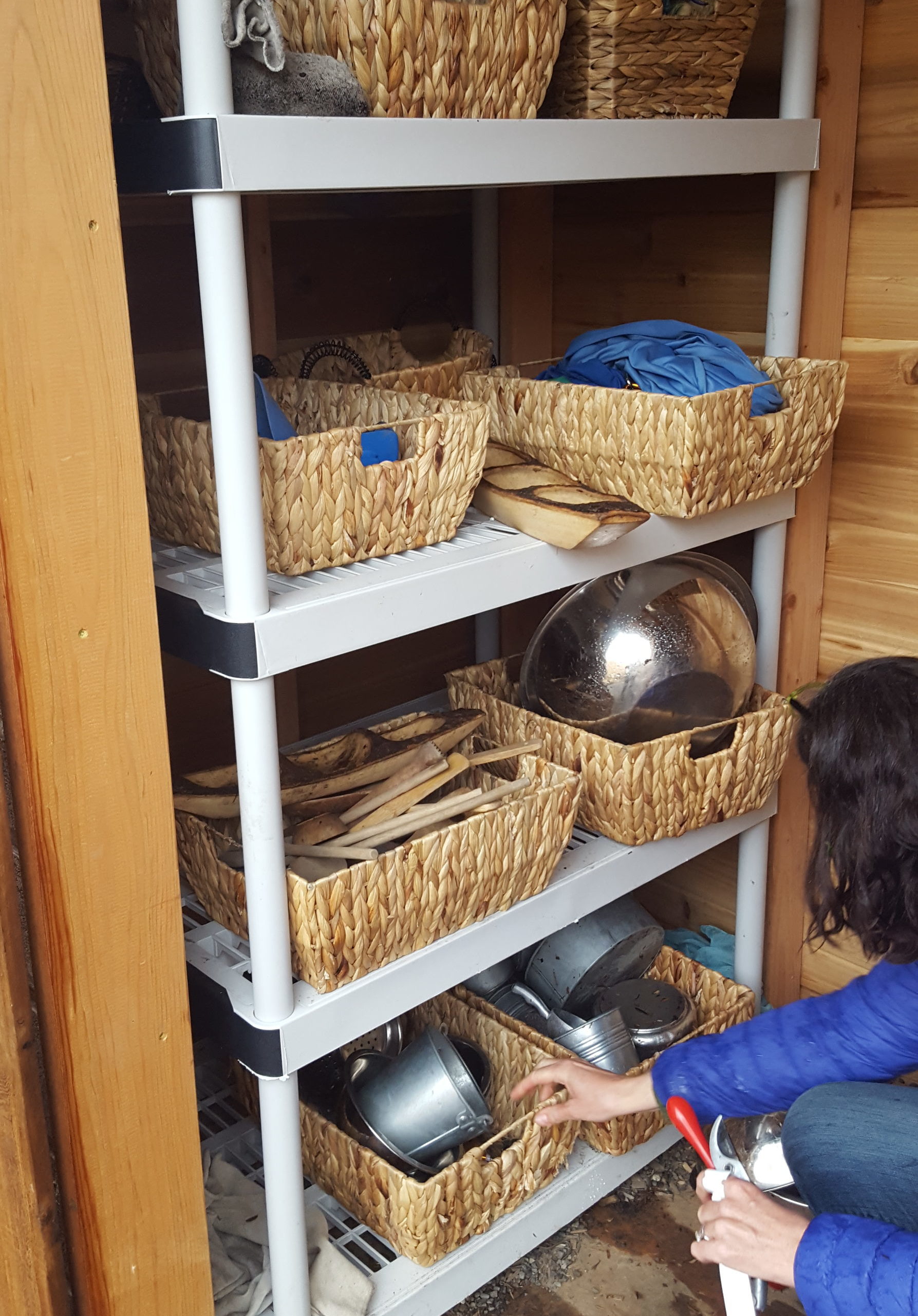


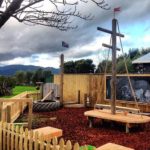
Hi there, can I ask where you go the wicker baskets from in the pic? I’m looking to get some for my class for loose parts! Thanks.
Interested in ideas for loose parts